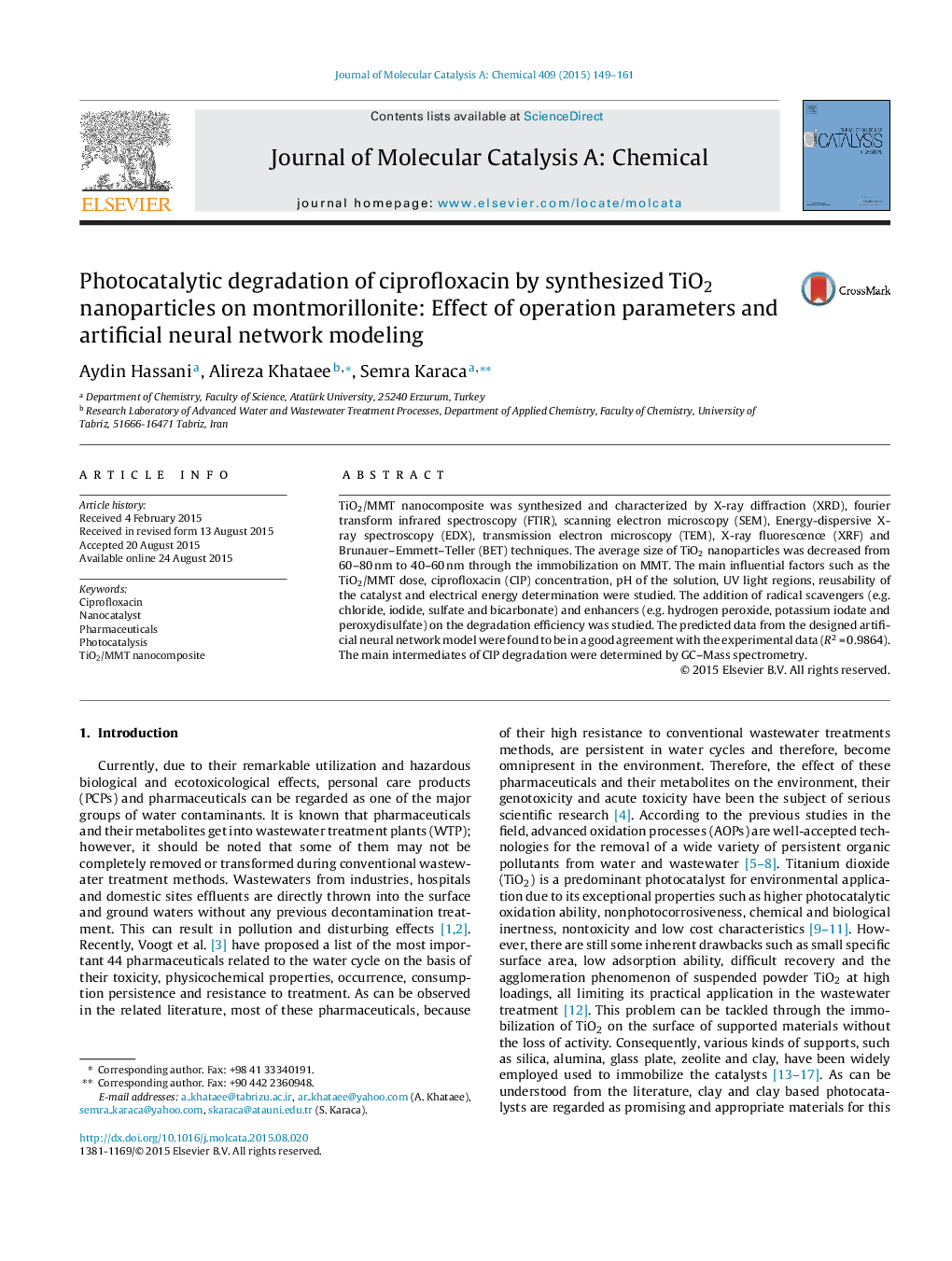| Article ID | Journal | Published Year | Pages | File Type |
|---|---|---|---|---|
| 64936 | Journal of Molecular Catalysis A: Chemical | 2015 | 13 Pages |
•Synthesis and immobilization of TiO2 on montmorillonite.•Characterization of the TiO2/MMT nanocomposite by XRD, XRF, SEM, EDX, TEM, BET and FTIR.•Photocatalytic degradation of ciprofloxacin using TiO2/MMT nanocomposite.•ANN modeling of photocatalytic degradation of ciprofloxacin.
TiO2/MMT nanocomposite was synthesized and characterized by X-ray diffraction (XRD), fourier transform infrared spectroscopy (FTIR), scanning electron microscopy (SEM), Energy-dispersive X-ray spectroscopy (EDX), transmission electron microscopy (TEM), X-ray fluorescence (XRF) and Brunauer–Emmett–Teller (BET) techniques. The average size of TiO2 nanoparticles was decreased from 60–80 nm to 40–60 nm through the immobilization on MMT. The main influential factors such as the TiO2/MMT dose, ciprofloxacin (CIP) concentration, pH of the solution, UV light regions, reusability of the catalyst and electrical energy determination were studied. The addition of radical scavengers (e.g. chloride, iodide, sulfate and bicarbonate) and enhancers (e.g. hydrogen peroxide, potassium iodate and peroxydisulfate) on the degradation efficiency was studied. The predicted data from the designed artificial neural network model were found to be in a good agreement with the experimental data (R2 = 0.9864). The main intermediates of CIP degradation were determined by GC–Mass spectrometry.
Graphical abstractFigure optionsDownload full-size imageDownload high-quality image (137 K)Download as PowerPoint slide
